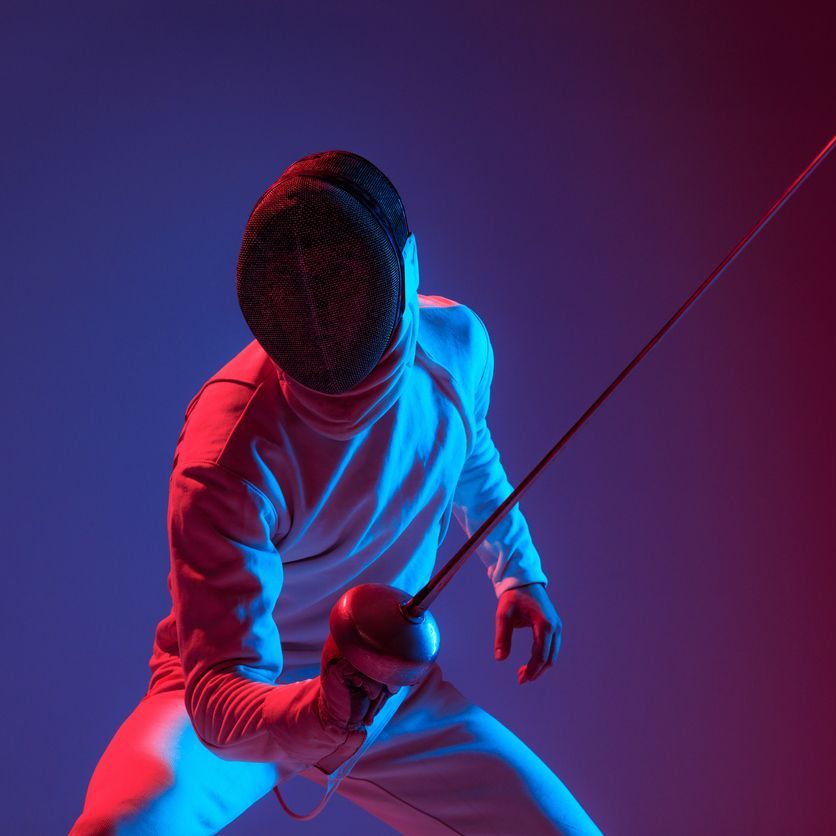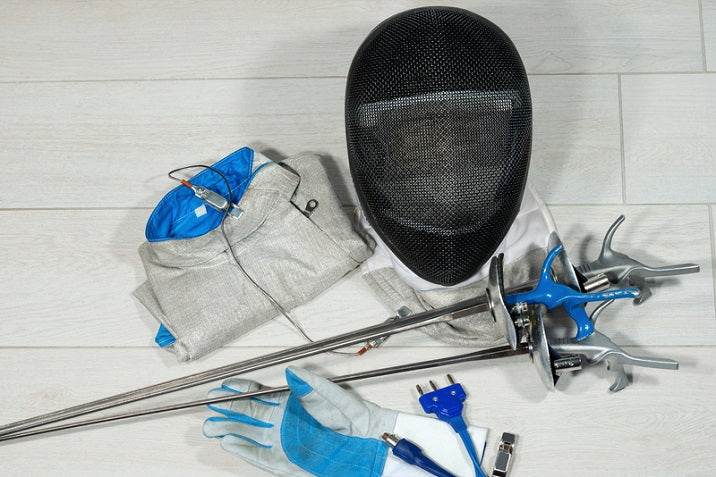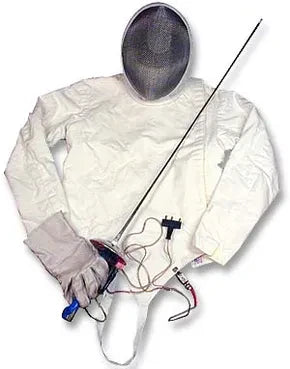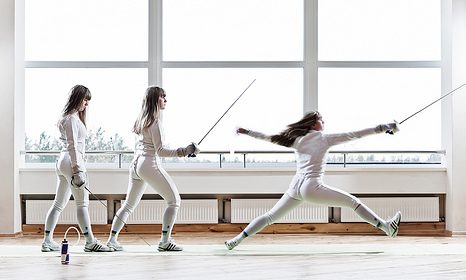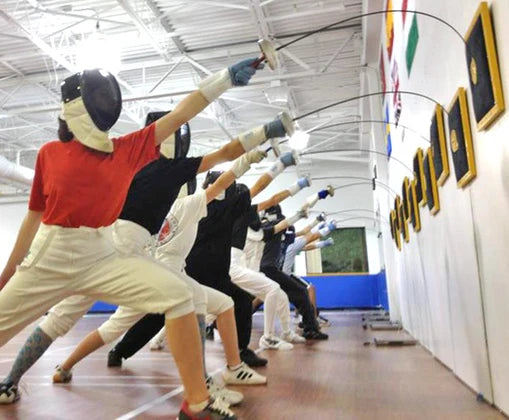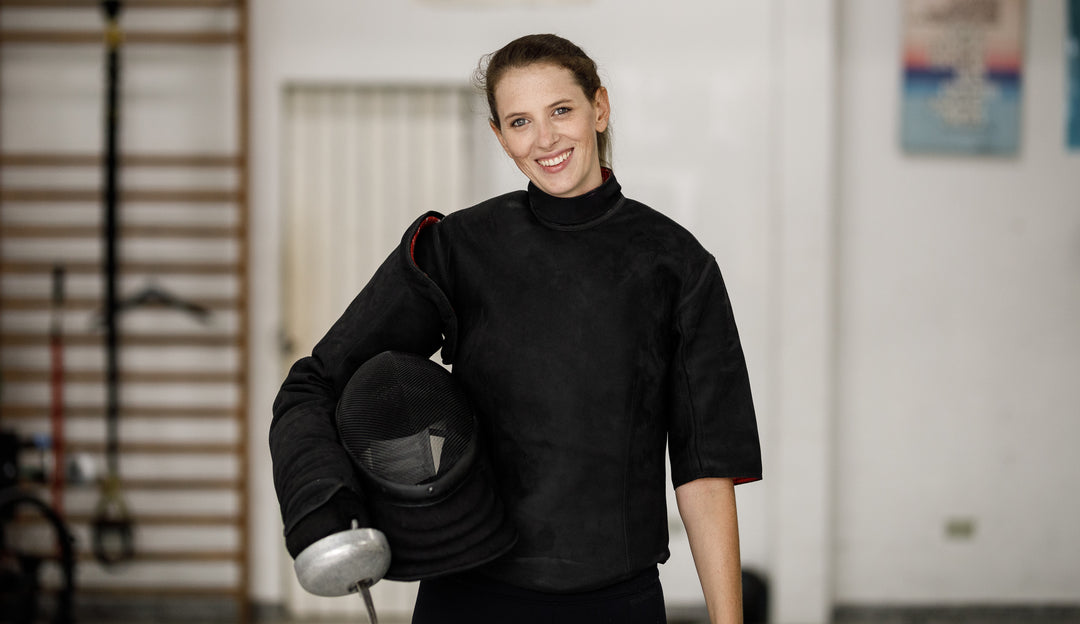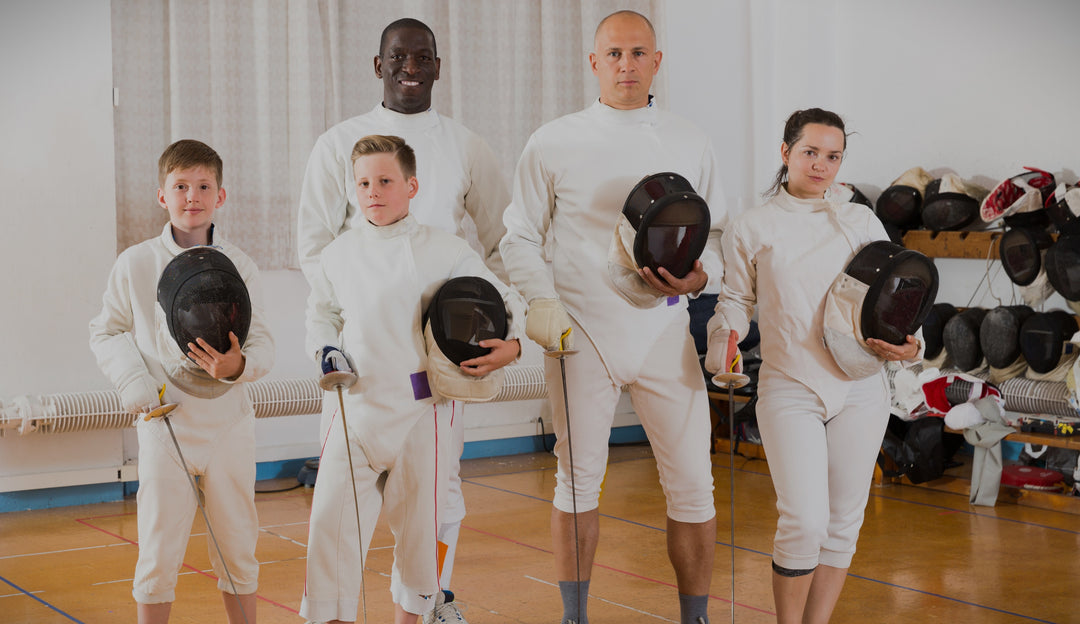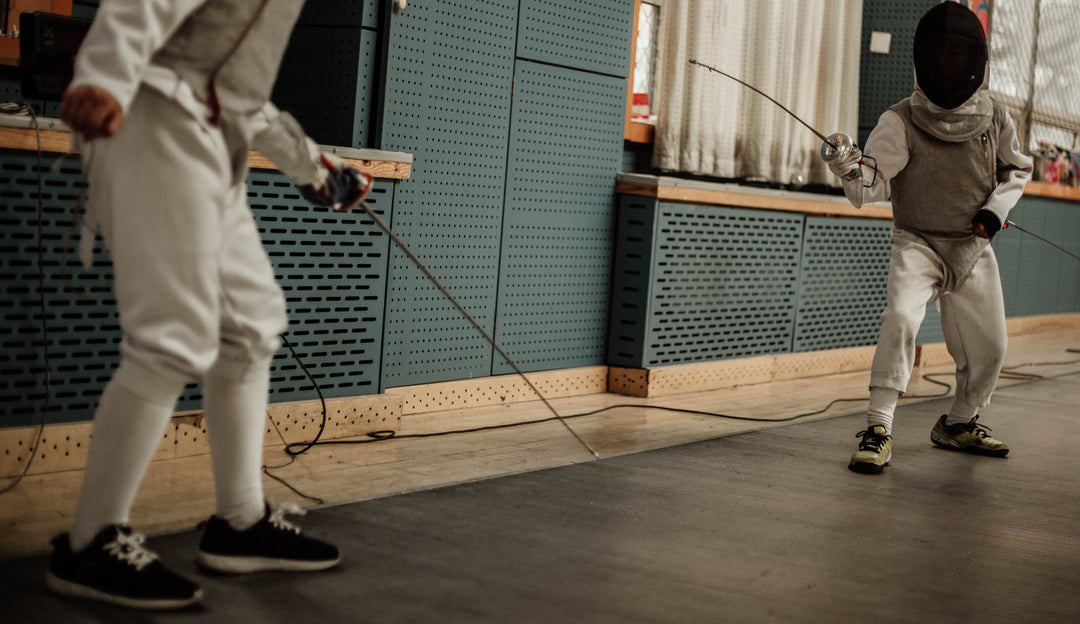Introduction
If you’re new to fencing, you might be surprised to learn that many clubs offer loaner equipment for use during beginner classes or provide a rental program. Before you rush into buying your own gear, check with your coach or club to see what’s available. Using provided equipment at first can help you get a feel for the sport and understand what you need before making a financial commitment.
Once you’re ready to invest in your own setup, knowing exactly what to buy—and why—can make the process much simpler. Below, we’ll cover the essential fencing gear for both men and women, outline U.S. guidelines, and offer tips on finding affordable options. At Fencing Club, we’re dedicated to helping new fencers start their journey with confidence and value.
Quick Checklist of Essential Fencing Gear
✅ Mask (at least 350N)✅ Glove (well-fitted on the weapon hand)
✅ Jacket (at least 350N protection)
✅ Breeches (at least 350N)
✅ Underplastron (at least 350N protection)
✅ Chest Protector (commonly required for women, optional for men)
✅ Socks (knee-high socks)
✅ Shoes (indoor court or fencing-specific shoes with good grip)
✅ Weapon (Foil, Épée, or Saber)
Gear Required for Your First Fencing Class
Your first fencing class might feel intimidating, but it doesn’t have to be. Most clubs offer relaxed introductory sessions with minimal equipment requirements. Before attending, call ahead to find out what you’ll need. In many cases, clubs provide basic protective gear to new students at the beginner level. If you’re expected to bring your own equipment, ask for specific recommendations on where to purchase reliable, affordable options. Some clubs even sell beginner gear on-site, which is a great way to test the fit and feel before committing to a full set.
If your club offers loaner gear, you should still dress appropriately for comfort, safety, and ease of movement. Suitable athletic clothing helps reduce the risk of injuries as you learn the fundamentals of footwork, blade handling, and strategy.
Pants
✅ Recommended: Wear long, athletic track pants (brands like Adidas or Nike work well). Ideally, choose pants without open pockets or with pockets that can zip closed. This prevents an opponent’s blade from catching on loose fabric.🚫 Avoid: Shorts, cargo pants, or jeans, as they restrict movement and may cause safety issues.
Shoes
✅ Recommended: Wear athletic shoes you already own, such as running shoes. There’s no need to invest in fencing-specific footwear right away. Tennis or badminton shoes often strike a good balance between affordability and the right amount of grip. Even some high-level fencers opt for quality badminton shoes due to their support and traction.🚫 Avoid: Non-athletic footwear. Shoes not designed for sports can lead to slips, trips, and unnecessary strain on your feet and ankles.
By showing up with the right attire and a willingness to learn, you’ll set yourself up for a more enjoyable, safer introduction to the art of fencing.
Buying Your Own Fencing Gear
As you become comfortable with the sport, it's a good idea to start buying your own gear. You don't always need to spend a lot of money all at once to buy everything, many coaches recommend buying key safety gear first such as mask and glove which you can wash regularly for health. These items tend to collect a lot of sweat, and you'll be more comfortable with this in your kit sooner. As you decide to stick with the sport it's a good idea to buy the more expensive equipment such as jacket, breeches, underplastron, and weapons.
Mask (at least 350N)
The fencing mask is your first line of defense, protecting your face, head, and neck from impacts. Its mesh construction allows for visibility and airflow while shielding you from thrusts and cuts. Most beginner-level masks meet a 350N resistance standard, which is sufficient for practice and lower-level competitions. For higher-level events, you may need a mask rated at 1600N (FIE-approved) for increased protection and durability.Glove (well-fitted on the weapon hand)
The fencing glove protects your weapon hand’s fingers, knuckles, and palm from impacts, while providing a secure grip on the handle. A proper fit ensures that you maintain excellent blade control and responsiveness. Although there’s no strict rating for gloves, look for durable, well-constructed options. Good gloves reduce blisters, dampen the shock of hits, and enhance your overall comfort and performance.Jacket (at least 350N protection)
A fencing jacket provides puncture-resistant protection for your torso and arms. Designed to fit snugly, it allows a full range of motion without loose fabric that could snag a blade. The 350N rating ensures the material can withstand moderate impacts while keeping you comfortable and agile. For more advanced competition, an 800N (FIE standard) jacket may be required, but a 350N model is ideal when starting out.Breeches (at least 350N)
Breeches are knee-length pants made of robust, puncture-resistant fabric. They protect your thighs and knees from weapon hits while allowing excellent mobility. A 350N rating ensures they can handle the demands of entry-level fencing and light competition. Paired with the right socks, breeches help create a seamless barrier that keeps your legs safeguarded as you move, lunge, and retreat.Underplastron (at least 350N protection)
The underplastron is worn beneath the jacket on the weapon arm side, adding a vital layer of protection for areas that are frequently targeted during bouts. Constructed from puncture-resistant materials, it reduces the force of impacts and helps prevent bruises or injuries. A 350N underplastron is standard for beginners, offering peace of mind as you learn proper techniques and develop confidence on the strip.Chest Protector (commonly required for women, optional for men)
A chest protector is a hard, contoured piece of protective equipment worn beneath the jacket. Women’s competitions often require one, while men may choose to wear it for additional peace of mind. By dispersing the force of oncoming hits, the chest protector offers reassurance and comfort—particularly during high-intensity exchanges. Although not rated by Newton standards, ensure it fits snugly and doesn’t restrict movement.Socks (knee-high socks)
Knee-high socks complete the lower portion of your fencing attire by covering any exposed skin between the breeches and shoes. They provide minor padding, help prevent abrasions and keep you comfortable as you move dynamically. While there’s no formal rating system for socks, choosing a breathable, moisture-wicking pair helps keep your feet dry and supported during intense training sessions.Shoes (indoor court or fencing-specific shoes with good grip)
While specialized fencing shoes are available, any athletic footwear with good lateral support and non-slip soles can work for beginners. Indoor court shoes, commonly used in sports like badminton or volleyball, provide a stable platform for quick footwork and lunges. As you advance, investing in fencing-specific shoes with reinforced heels and improved grip can further enhance your performance and reduce the risk of injury.Weapon (Foil, Épée, or Saber)
When choosing a fencing weapon, you’ll encounter both electric and non-electric (also called “dry” or “practice”) versions. Electric weapons include a wired tip and are used with scoring systems, making them necessary for competitions or advanced training scenarios. Dry weapons, on the other hand, have no electrical components and are ideal for developing technique and fundamentals without the complexity of electronic scoring systems.
Blade Sizes and Age Categories in the U.S.:
In the United States, blade size is typically linked to the fencer’s age category to ensure proper handling and
safety:
- Y10 (10 & Under): Shorter blades, typically size #0 or #2, to accommodate younger, smaller fencers.
- Y12 (12 & Under): Intermediate blade lengths (often #4) as fencers grow stronger and more skilled.
- Y14 (14 & Under) and Older (Cadet, Junior, Senior): Full-size #5 blades, the standard length used in adult-level fencing.
Beginner, Intermediate, and Advanced (FIE-Rated) Weapons:
-
Beginner (Non-FIE, Inexpensive):
Pros: Very affordable, ideal for beginners unsure about their long-term commitment.
Cons: Lower-grade steel may bend or break within a few months of regular use. -
Intermediate (Non-FIE, Mid-Range):
Pros: More durable and better-crafted, providing a superior feel for blade handling and lasting longer than beginner options.
Cons: More expensive than beginner blades, but still not suitable for high-level competitions. -
Advanced (FIE-Rated):
Pros: Meet stringent FIE standards, ensuring top-tier durability, stability, and reduced risk of breakage. Ideal for serious competitors.
Cons: The most expensive option, reflecting the enhanced quality and safety demanded at elite levels.
By considering whether you need an electric or dry weapon, choosing the appropriate blade size for your age category, and selecting the right quality tier based on your commitment and goals, you set the foundation for long-term success and enjoyment in fencing.
Next Steps
Embarking on your fencing journey can feel like a big step, but having the right gear ensures you’ll start off safely, comfortably, and confidently. Begin by taking advantage of loaner or rental gear at your local club, then gradually invest in your own equipment as you develop your skills and confirm your commitment to the sport. By focusing on essential protective items first and upgrading to more advanced equipment as you progress, you’ll set yourself up for long-term improvement and enjoyment.
Ready to take the next step? Fencing Club offers a wide range of beginner-friendly equipment at reasonable prices. From affordable starter masks and gloves to full kits that meet U.S. standards, our selection caters to all skill levels. Whether you’re just starting out or looking to upgrade, we’re here to help you find the perfect gear for your fencing needs.




